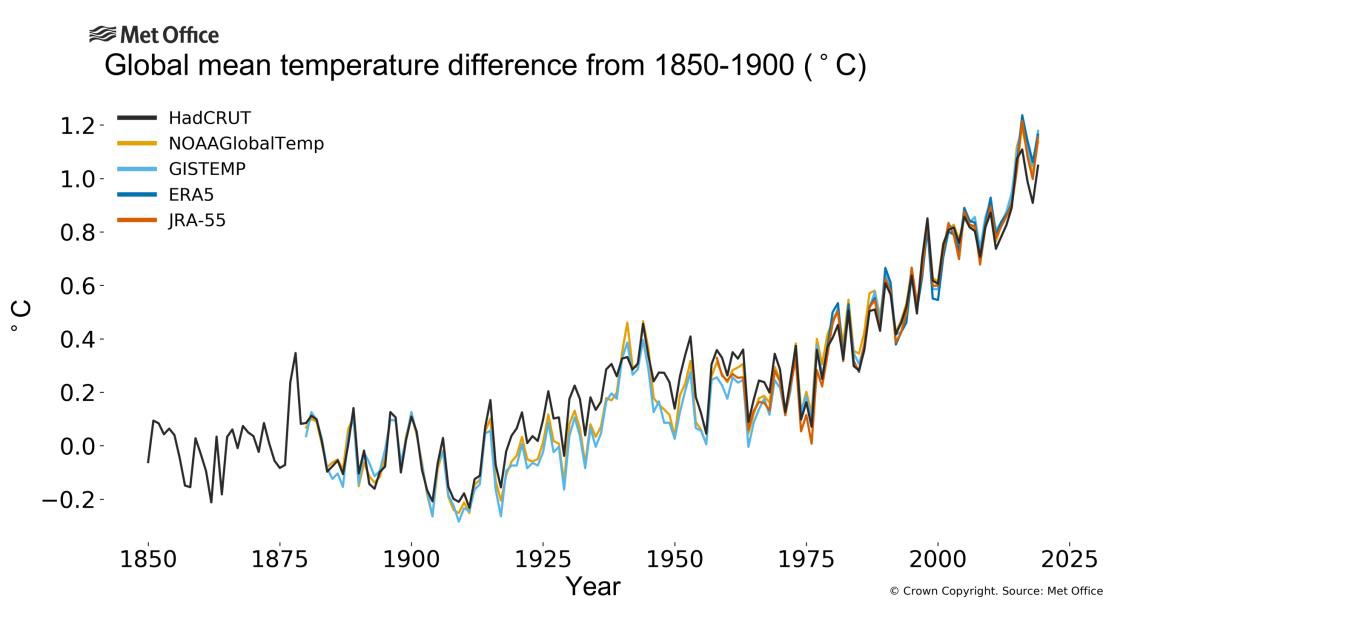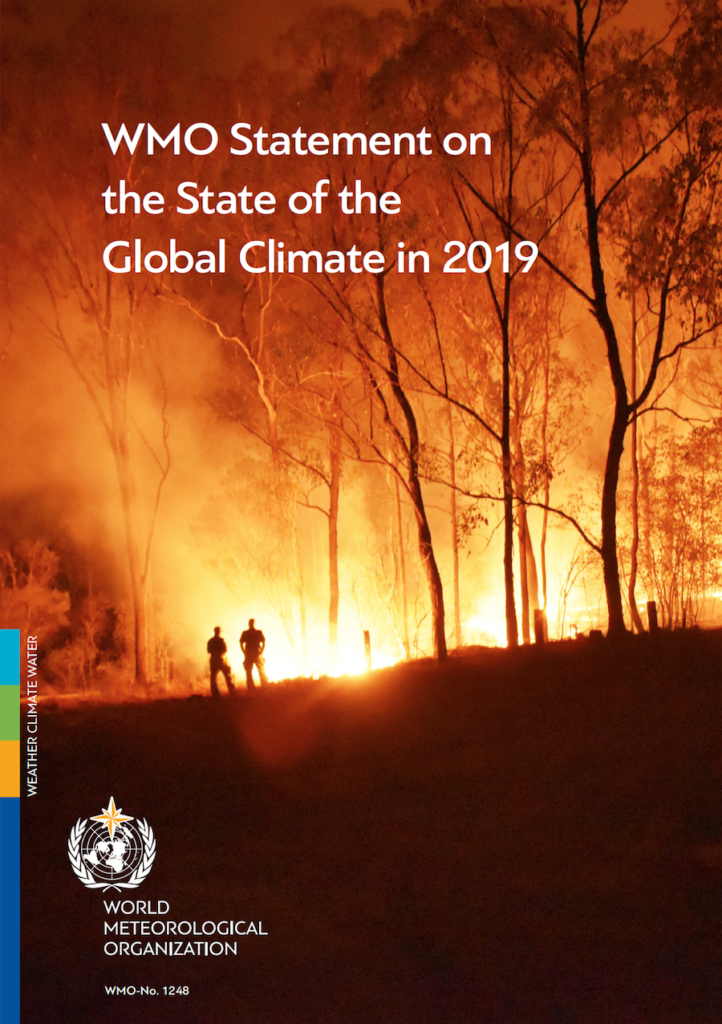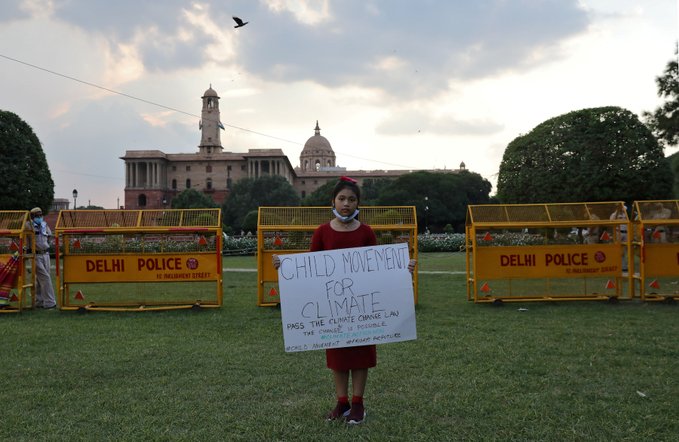Multi-agency report highlights increasing signs and impacts of climate change in atmosphere, land and oceans
 Biswadeep Gupta
Biswadeep Gupta

The rise in temperature in land and ocean, the rise of sea level, and melting of ice are few of the important indicators of global climate changes occurring, according to the new report compiled by the World Meteorological Organization (WMO) in association with its varied partners.
The provisional report was presented at the UN Climate Change Conference in December last year where it was highlighted that 2019 was the second warmest year, 2015-2019 are the five warmest years on record, and 2010-2019 the warmest decade on record. Since the 1980s, each successive decade has been warmer than any preceding decade since 1850.
“We are currently way off track to meeting either the 1.5°C or 2°C targets that the Paris Agreement calls for,” stated United Nations Secretary-General Antonio Guterres.
The report was placed by the UN Secretary-General and WMO Secretary-General Petteri Taalas at UN headquarters on 10 March.

“We just had the warmest January on record. Winter was unseasonably mild in many parts of the northern hemisphere. Smoke and pollutants from damaging fires in Australia circumnavigated the globe, causing a spike in CO2 emissions. Reported record temperatures in Antarctica were accompanied by large-scale ice melt and the fracturing of a glacier which will have repercussions for sea-level rise,” said Taalas.
He further echoed and said “temperature is one indicator of on-going climate change. Changes in the global distribution of rainfall have had a major impact on several countries. Sea levels are rising at an increasing pace, largely due to the thermal expansion of seawater as well as the melting of the largest glaciers, like in Greenland and Antarctica. This is exposing coastal areas and islands to a greater risk of flooding and the submersion of low-lying areas.”
‘It is a matter of time’, warns WMO Secretary-General Taalas and asserted that as greenhouse gas levels continue to increase, the warming will continue. A recent decadal forecast indicates that a new annual global temperature record is likely in the next five years.
Preliminary data indicates that greenhouse gas concentrations continued to increase in 2019 and the ocean experienced on average nearly 2 months of unusually warm temperatures. In the decade 2009-2018, the ocean absorbed around 23% of annual CO2 emissions, increasing ocean acidity, affecting marine life, growth, and reproduction. Deoxygenation alongside ocean warming and acidification is now seen as a major threat to ocean ecosystems and the wellbeing of people that depend on them.Sea level has risen throughout since 1993 but the rate has increased mainly due to the melting of ice sheets on Greenland and Antarctica and in 2019, the global mean sea level reached its highest. World Glacier Monitoring Service indicates that 2018/19 was the 32nd consecutive year of negative mass balance for selected reference glaciers.
The report has identified the weather and climate impacts on human health, food security, migration, ecosystems and marine life. Extreme heat conditions are taking an increasing toll on human health and health systems. In 2019, record-setting high temperatures from Australia, India, Japan, and Europe negatively affected health and well-being. In Japan, a major heatwave event resulted in over 100 deaths and an additional 18 000 hospitalizations. Changes in climatic conditions since 1950 are making it easier for the Aedes mosquito species to transmit dengue virus, increasing the risk of the occurrence of disease, about half of the world population is now at risk of infection.

The report also highlighted the food security issue and doubts the ‘Zero Hunger’ target of the 2030 Agenda for Sustainable Development. It reported that even though after a decade of steady decline, hunger is on the rise again – over 820 million people suffered from hunger in 2018. Among 33 countries affected by food crises in 2018.
There had been 6.7 million new internal disaster displacements were recorded between January and June 2019. More than2 200 lives were reported to have been lost in various flooding episodes in India, Nepal, Bangladesh, and Myanmar during the monsoon season. Drought affected many parts of southeast Asia and Australia, which had its driest year on record, influenced by the strong positive phase of the Indian Ocean Dipole.
Two major heat waves occurred in Europe in late June and late July. Australia’s seven hottest days on record, and nine of the 10 hottest, occurred in 2019. Fire activity occurring in some parts of the Arctic where it was previously extremely rare. One of the year’s most intense tropical cyclones was Dorian, which made landfall with category 5 intensity in the Bahamas.
The tell-tale physical signs of climate change are now not only a wake-up call but are a phase we have already entered which shall require a civilizational effort to reverse.





